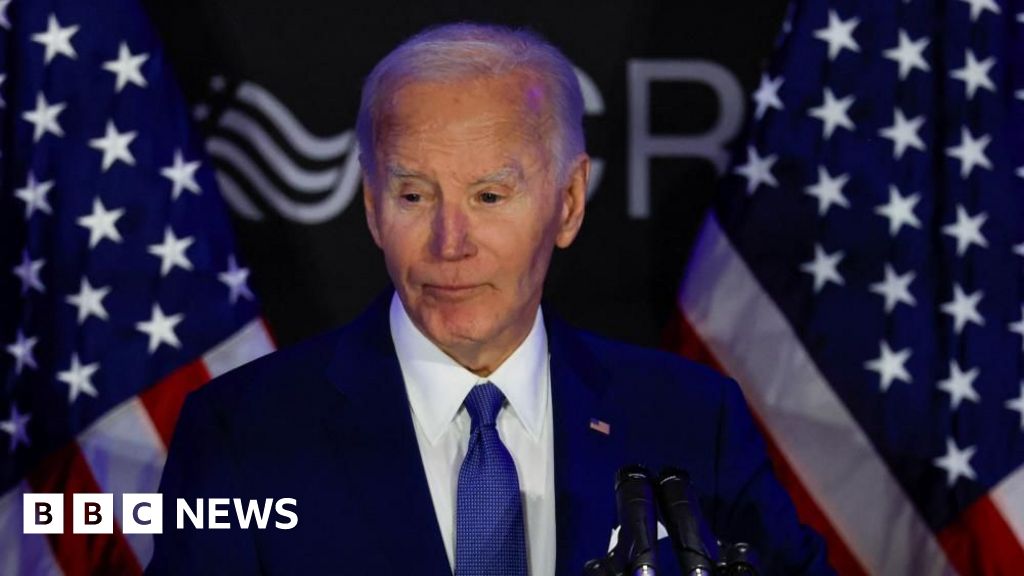ARTICLE AD BOX

Americans will head to the polls in November to elect the next US president. The vote will be closely watched around the world.
They will also be voting for members of Congress, who play a key part in passing laws that can have a profound effect on American life.
When is the US presidential election?
The 2024 election is on Tuesday, 5 November 2024. The winner will serve a term of four years in the White House, starting in January 2025.
The president has the power to pass some laws on their own but mostly he or she must work with Congress to pass legislation.
On the world stage, the US leader has considerable freedom to represent the country abroad and to conduct foreign policy.
Who are the candidates and how are they nominated?
The two main parties nominate a presidential candidate by holding a series of votes called state primaries and caucuses, where people choose who they want to lead the party in a general election.
In the Republican Party, former president Donald Trump won his party's support with a massive lead over his rivals. He became the official Republican nominee at a party convention in Milwaukee, Wisconsin. Trump chose Ohio senator JD Vance to be his vice-presidential running mate.
For the Democrats, Vice-President Kamala Harris joined the race after President Joe Biden dropped out and no other Democrats stood against her. Her running mate is Minnesota Governor Tim Walz.
There are also some independent candidates running for president.
One of the most prominent was Robert F Kennedy Jr, nephew to former president John F Kennedy, but he suspended his campaign in late August and has endorsed Trump.
What do Democrats and Republicans stand for?
The Democrats are the liberal political party, with an agenda defined largely by its push for civil rights, a broad social safety net and measures to address climate change.
The Republicans are the conservative political party in the US. Also known as the GOP, or the Grand Old Party, it has stood for lower taxes, shrinking the size of the government, gun rights and tighter restrictions on immigration and abortion.
How does the US presidential election work?
The winner is not the person who gets the most votes across the country. Instead, both candidates compete to win contests held across the 50 states.
Each state has a certain number of so-called electoral college votes partly based on population. There are a total of 538 up for grabs, and the winner is the candidate that wins 270 or more.
All but two states have a winner-takes-all rule, so whichever candidate wins the highest number of votes is awarded all of the state's electoral college votes.
Most states lean heavily towards one party or the other, so the focus is usually on a dozen or so states where either of them could win. These are known as the battleground or swing states.
It is possible for a candidate to win the most votes nationally - like Hillary Clinton did in 2016 - but still be defeated by the electoral college.
Who can vote in the US presidential election?
Most US citizens who are aged 18 or over are eligible to vote in the presidential election.
Every state except North Dakota requires people to register before they can vote.
Each state has its own voter registration process and deadline.
US citizens who live abroad can register to vote and request an absentee postal ballot by completing the Federal Post Card Application (FCPA), external.
Early voting in some states - including crucial swing states Georgia and North Carolina - is already under way.
Who else is being elected in November?
All of the attention will be on who wins the presidency, but voters will also be choosing new members of Congress - where laws are passed - when they fill in their ballots.
Congress consists of the House of Representatives, where all 435 seats are up for election, and the Senate, where 34 seats are being contested.
Republicans currently control the House, which initiates spending plans. Democrats are in charge of the Senate, which votes on key appointments in government.
These two chambers pass laws and can act as a check on White House plans if the controlling party in either chamber disagrees with the president.
When will we know who has won the election?
Usually the winner is declared on the night of the election, but in 2020 it took a few days to count all the votes.
The period after the election is know as the transition, if there is a change of president.
This gives the new administration time to appoint cabinet ministers and make plans for the new term.
The president is officially sworn into office in January in a ceremony known as the inauguration, held on the steps of the Capitol building in Washington DC.
North America correspondent Anthony Zurcher makes sense of the race for the White House in his weekly US Election Unspun newsletter.
Readers in the UK can sign up here. Those outside the UK can sign up here, external.

 6 months ago
31
6 months ago
31








 English (US) ·
English (US) ·